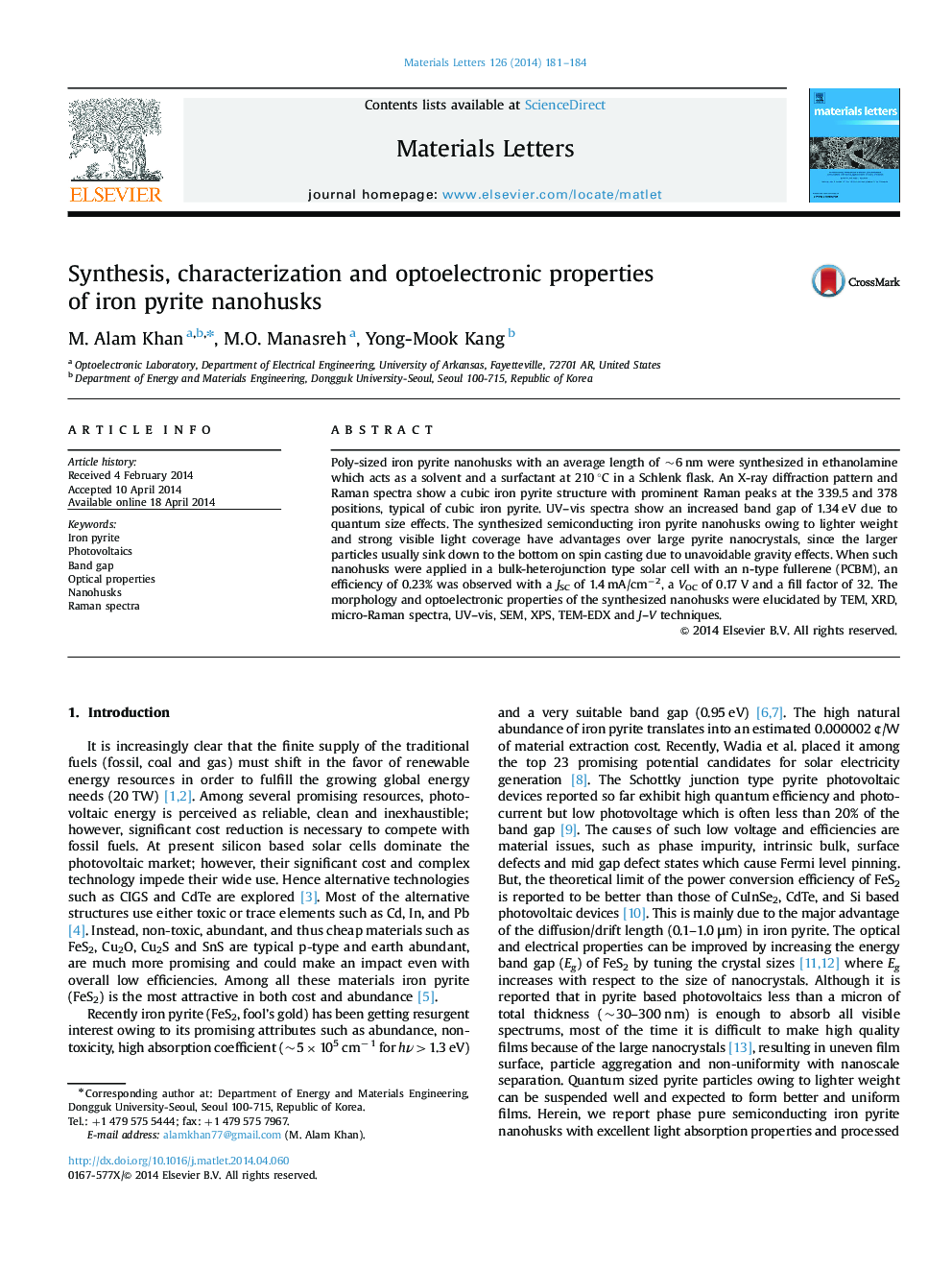| Article ID | Journal | Published Year | Pages | File Type |
|---|---|---|---|---|
| 1644244 | Materials Letters | 2014 | 4 Pages |
•Cubic phased iron pyrite nanohusks with band gap of 1.34 eV were synthesized.•The synthesized nanohusks show a wide range of excellent visible light responses.•Owing to their smaller size and lighter weight, they are promising for solar inks.•A photovoltaic efficiency of 0.23% was observed with n-type fullerene.
Poly-sized iron pyrite nanohusks with an average length of ~6 nm were synthesized in ethanolamine which acts as a solvent and a surfactant at 210 °C in a Schlenk flask. An X-ray diffraction pattern and Raman spectra show a cubic iron pyrite structure with prominent Raman peaks at the 339.5 and 378 positions, typical of cubic iron pyrite. UV–vis spectra show an increased band gap of 1.34 eV due to quantum size effects. The synthesized semiconducting iron pyrite nanohusks owing to lighter weight and strong visible light coverage have advantages over large pyrite nanocrystals, since the larger particles usually sink down to the bottom on spin casting due to unavoidable gravity effects. When such nanohusks were applied in a bulk-heterojunction type solar cell with an n-type fullerene (PCBM), an efficiency of 0.23% was observed with a JSC of 1.4 mA/cm−2, a VOC of 0.17 V and a fill factor of 32. The morphology and optoelectronic properties of the synthesized nanohusks were elucidated by TEM, XRD, micro-Raman spectra, UV–vis, SEM, XPS, TEM-EDX and J–V techniques.
